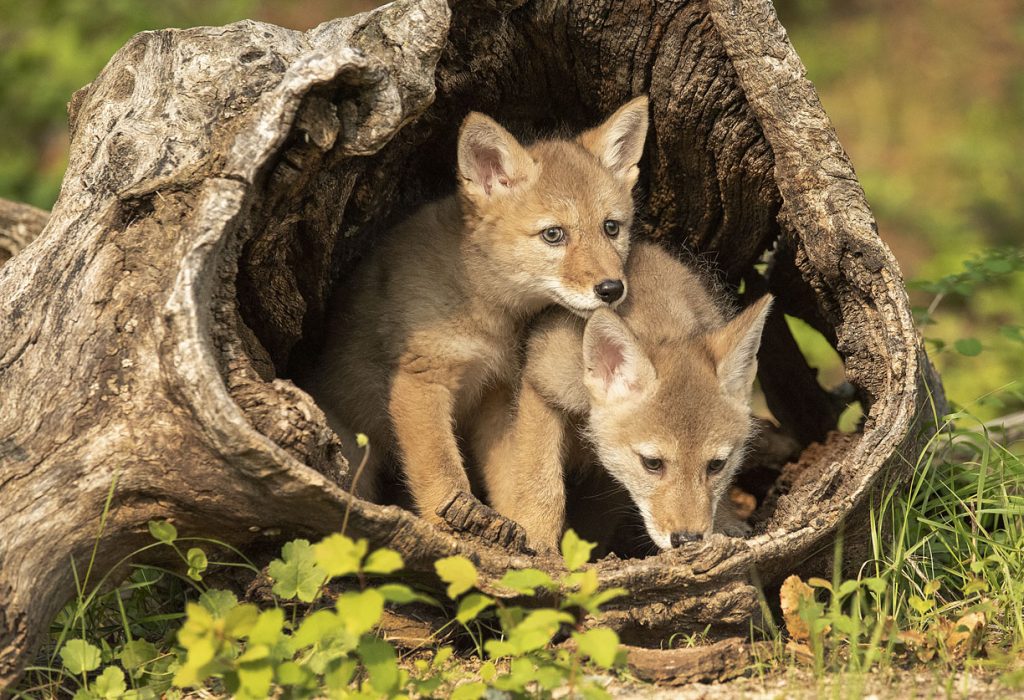LYNNWOOD, Wash., July 1, 2021 – As it is the time of year when coyotes begin to explore further from their dens in Snohomish County, community members are experiencing an increase in coyote sightings. Now, when a cat goes missing, it is hard not to imagine worst-case scenarios wherein a house pet might have encountered a wild animal.
As residents of Snohomish County and the Seattle area share a habitat with coyotes, education and safety precautions may be the best solution.
Coyotes and Missing Cats in Snohomish County
“What’s with all the missing cats? Is there a tracker to see if there is a pattern?” A Mukilteo resident asked on their Nextdoor app. “Sadly, we have seen an influx of coyotes in the area,” another user responded.

The conversation started on the 18th of June and had over 70 comments by June 20th. Most responses were of concern supporting the coyote theory, while others claimed coyotes killing cats doesn’t happen as frequently as some might think. But the simple fact of the matter is that the Pacific Northwest is a habitat for coyotes, and it is not uncommon to see them roaming the streets of the surrounding neighborhoods.
According to the Washington Department of Fish and Wildlife, “In Washington, these intelligent and adaptable [coyotes] now manage to occupy almost every conceivable habitat type, from open ranch country to densely forested areas to downtown waterfront. Despite ever-increasing human encroachment and past efforts to eliminate coyotes, the species maintains its numbers and is increasing in some areas.”
Coyotes Exploring Beyond their Den in Snohomish County
It’s the time of year when residents of the north Seattle area experience increased coyote sightings and incidents. This annual occurrence is corroborated by the City of Mukilteo’s Department of Animal Control, whose website reads, “Many people are concerned about their animals being targeted by coyotes, and that there is an increase in the number of reported sightings. During this time of the year, both adults and adolescent pups are exploring further from the den, leading to more sightings.”

“Females tend to make their dens under fallen trees or digging out dirt to settle in,” the site continues. “If you live near one of the gulches, wetlands, or large numbers of trees, it is likely that coyotes have made their home near you.”
Coyotes feed on small mammals such as rabbits, rodents, and free-roaming domestic animals. Their prey when eaten are missing heads, feet, and hides leaving fur at the feeding site.
Bones, feathers, and fur can be seen next to den entries. Signs of digging occur where coyotes follow promising scents and excavate prey, including moles, voles, and gophers.
Not a New Phenomenon According to Wildlife Dispatcher
Though it may be frightening for some, coyote sightings in Lynnwood, Mukilteo, Edmonds, Everett, and other developed parts of the region are nothing new. Ronnie Drake, a Washington Department of Fish and Wildlife dispatcher, has been receiving calls and making incident and sighting reports about coyotes for half a decade now.
“I can tell you, working here at dispatch for the last five years, it has been constant, and it has been a problem, and you know, it’s not going to go away anytime soon,” Drake said when asked about recent coyote sightings in the Seattle area.
“And it is a massive problem in Seattle and Tacoma,” Drake continued. “I have not seen it — being in here and getting those calls for five years — decrease. It’s just been a constant issue.”
Coyotes rarely attack people however precautions should be taken for little children. Fish and Wildlife suggest if people run into an aggressive coyote, make yourself look big, put your hands in the air and throw things at the animal if they get aggressive. Do not attempt to pet nor feed a coyote.
Education and Safety Precautions
Adult coyotes weigh between 20 to 35 pounds, with males being slightly larger than females. At the shoulder, an adult male coyote is about 25 inches tall. They resemble a small German shepherd and can come in a variety of colors.
The reason why coyotes have been a constant issue over the years isn’t due to a lack of resources or funding; rather, it is simply due to nature’s tenacity. As the City of Mukilteo’s website explains, “Contrary to popular belief, efforts to control or even eliminate coyote populations only disrupt a pack and generally leads to an increase in pups being born as the pack rebuilds.”
Mukilteo Animal Control believes that education is the best method of reducing conflict with coyotes. “Coyotes have been living with and among humans for the last 15,000 years and will continue to share our urban environment,” their site reads.
“While we are fortunate to have these wildlife habitats in our community, learning how to live with and avoid conflict is a better way to resolve this human-wildlife contact. Enjoy your natural spaces and remember wildlife is still wild.”
Even though a perfect solution may not exist, Animal Control in Mukilteo has made an extensive list of safety suggestions for residents and their pets. The complete list of precautions can be read on the department’s website.
Human Solutions and Finding Lost House Pets
Do not feed coyotes. A coyote who learns that humans are an easy source of free food will not distinguish between your scraps and your small pet.
It’s also important to remove or secure potential food sources such as: pet food, garbage and compost, and especially fallen fruit – coyotes love fruit and berries.
Whether it’s coyotes or raccoons, residents experiencing any sort of wildlife conflict can call PAWS Wildlife Center for a humane solution.
Pet owners whose pets are missing can contact animal shelters’ lost and found pages, such as Everett’s lost and found pets page or Snohomish County’s webpage for lost animals.










